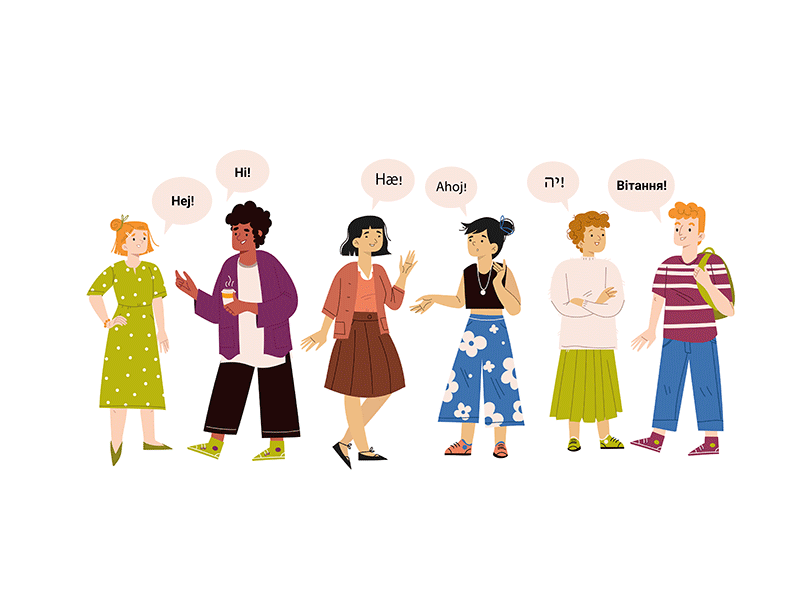Bilingualism, the ability to speak two languages fluently, has long been a fascinating subject of study among linguists and psychologists. As the world becomes more interconnected, the advantages of bilingualism have come to the forefront of educational and cognitive research. This article delves into the cognitive profits of bilingualism, highlighting the myriad benefits it offers to individuals, with a particular focus on teenagers aged 12-18, which are the target of the BiblioLingua project. Drawing on research and real-life examples, we explore how projects like BiblioLingua, with its collection of 17 ebooks, lesson materials, and pedagogical dossiers, play a vital role in unleashing the power of multilingual minds.
Enhanced executive functions
One of the significant cognitive advantages of bilingualism lies in the boost to executive functions. These cognitive processes, including attentional control, working memory, and cognitive flexibility, are essential for problem-solving, decision-making, and multitasking. Bilingual individuals are known to have better executive control, allowing them to switch between tasks more efficiently, focus on relevant information, and adapt to changing circumstances with ease. For teenagers, who face numerous academic and social challenges, being bilingual can be a powerful asset in navigating their daily lives.
Delaying cognitive decline
Research has shown that bilingualism can also have long-term cognitive benefits. Bilingual individuals tend to experience a delay in the onset of cognitive decline and dementia compared to monolingual individuals. The constant need to manage and switch between two languages creates a cognitive reserve, which may protect the brain from age-related cognitive disorders. By fostering second language acquisition among teenagers, projects like BiblioLingua may contribute to building cognitive resilience that can have positive effects on mental health and well-being later in life.
Heightened metalinguistic awareness
Metalinguistic awareness refers to the ability to reflect on and manipulate language itself. Bilingual individuals develop a heightened sensitivity to language structure, grammar, and vocabulary, which translates to improved language skills overall. Teenagers immersed in a bilingual environment are likely to sharpen their metalinguistic awareness, making them more adept at learning additional languages and honing their communication skills.
Increased empathy and cross-cultural understanding
Language and culture are intertwined, and bilingual individuals often demonstrate a greater understanding and appreciation of cultural differences. By being exposed to materials accessible in multiple languages and therefore, multiple cultures through projects like BiblioLingua, teenagers can develop empathy and open-mindedness toward people from diverse backgrounds. This heightened cultural sensitivity fosters tolerance and respect, contributing to the development of well-rounded, globally aware citizens.
Enhanced cognitive flexibility
Bilingual individuals are more skilled at adapting to new situations and perspectives due to their experience in navigating different languages and cultural norms. This cognitive flexibility allows them to see problems from various angles and find creative solutions. For teenagers facing a rapidly changing world, cognitive flexibility is an invaluable trait that enables them to embrace challenges and explore innovative ideas.
The cognitive profits of bilingualism are indisputable, offering numerous advantages to individuals throughout their lives. Projects like BiblioLingua play a vital role in promoting language learning and fostering the development of multilingual minds among teenagers aged 12-18. By enhancing executive functions, delaying cognitive decline, nurturing metalinguistic awareness, promoting empathy, and empowering cognitive flexibility, bilingualism equips teenagers with the tools to thrive in an interconnected and diverse world. As they embark on the journey of language exploration through literature, young minds unlock their potential, becoming more adaptable, empathetic, and intellectually agile individuals.
References
Schönpflug, U. (2001). Bilingualism: Cognitive Aspects. International Encyclopedia of the Social & Behavioral Sciences.
De Milliano, I. I. C. M. (2007). The unriddling of metalinguistic awareness in early adolescence: An investigation of riddle comprehension and appreciation of young adolescents attending different grades and school tracks. Universiteit Van Tilburg. http://arno.uvt.nl/show.cgi?fid=70025
Owens, R.E. (1996) Language Development: An Introduction, Allyn & Bacon
Wallach, G.P. (2008) Language Intervention for School-Age Students: Setting Goals for Academic Success. Mosby Elsevier
O. Dea´K, G. (2003). The development of cognitive flexibility and language abilities. Department of Cognitive Science, University of California, San Diego. https://www.researchgate.net/publication/9063158_The_Development_of_Cognitive_Flexibility_and_Language_Abilities
Xia, T., An, Y., & Guo, J. (2022). Bilingualism and creativity: Benefits from cognitive inhibition and cognitive flexibility. Frontiers in Psychology. https://doi.org/10.3389/fpsyg.2022.1016777
Sipra, M. A. (2012). Contribution of bilingualism in language teaching. English Language Teaching, 6(1). https://doi.org/10.5539/elt.v6n1p56
Andrade, A. (2018). Bilingualism in the education of adolescents. California State University Stanislaus.
Van Den Noort, M., Vermeire, K., Bosch, P., Staudte, H., Krajenbrink, T., Jaswetz, L., Struys, E., Yeo, S. G., Barisch, P., Perriard, B., Lee, S., & Lim, S. (2019). A Systematic Review on the Possible Relationship Between Bilingualism, Cognitive Decline, and the Onset of Dementia. Behavioral Sciences, 9(7), 81. https://doi.org/10.3390/bs9070081

